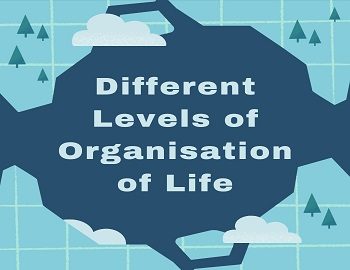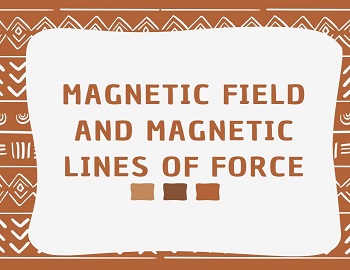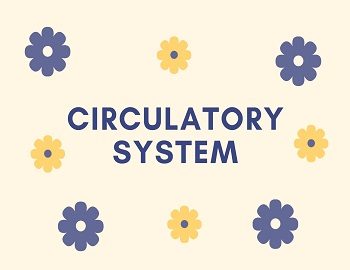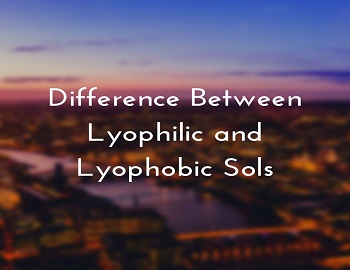Table of Contents
Different Levels of Organisation of Life:
All living things possess a certain degree of organisation and exist as individual organisms. Some organisms are unicellular (formed of single-cell only) while the other are multicellular (formed of many cells). In higher multicellular organisms, similar cells combine together to form distinct tissues. The tissues, in turn, combine to form organs. Several organs constitute an organ system which is responsible for a specific function. Most of the plants and animals, we come across, are formed of such organ systems.
Let us consider different levels of organisation one by one.
Organisation at Cellular Level:
There is a large number of plants and animals which are unicellular and hence, structurally, represent a single cell. Inspite of formed of single cell, the unicellular organisms are able to perform various functions of life, such as, nutrition, respiration, reproduction, irritability etc.
Let us consider two examples of the unicellular level of organisation- amoeba and Paramecium.
Amoeba, a single-celled organism, has several specialized organelles in its body. These cell organelles are responsible for the vital functions of life. For instance, locomotion and ingestion (intake of food inside the body) occur by pseudopodia, digestion is carried by the food vacuole, osmoregulation (keeping the water content of the body constant) is brought about by the contractile vacuole and so on. A single cell, present in amoeba, makes it possible for the amoeba to show all the activities of life- locomotion, nutrition, growth, respiration, excretion, irritability and reproduction.
Paramecium, a single-celled organism, moves by means of a small hair-like structure called cilia. It respires through the body surface. It has a permanent food passage. Paramecium takes in food through a mouth like a cell structure called cytopharynx.
Organisation at Tissue Level:
In multicellular organisms, similar cells are organized into groups, called tissues, which perform specialized functions. There are some organisms which have only one kind of tissue and perform all the essential activities of life. These represent the organization at a tissue level. Spirogyra, one of the algae, is an example of such an organization. There is a slight advancement in the direction of tissue formation in Hydra which is a colourless or brownish tube-like body with radial symmetry. The body wall of Hydra is formed of two layers of cells between which is present a thin sheet of a non-cellular jelly-like material, the mesogloea. The outer layer (epidermis) is protective, sensory, muscular, secretory and reproductive in function. It is formed of seven types of cells. The inner layer (gastro-dermis) is digestive, absorptive and muscular in function. It is formed of five types of cells. Hydra represents the start of cell differentiation (tissue formation) and division of labour in the animal kingdom.
Organisation at Organ Level:
In higher multicellular organisms, various tissues work together in a co-ordinated way to constitute organs. Each organ is, thus, formed of more than one kind of tissues. In plants, leaf, stem and root are recognized as organs.
Leaf:
The plant leaf is an important organ of the plant. Its main functions are a synthesis of food, transpiration (loss of water into the air) and respiration. A leaf is formed of different types of tissues example- epidermis, mesophyll and vascular. Epidermis at the upper and lower surfaces protect the delicate internal tissues of the leaf. The lower epidermis is also concerned with the interchanges of gases and the transpiration of water because of the presence of stomata (minute pores). The ground tissue of the leaf, the mesophyll, has upper palisade parenchyma and lower spongy parenchyma.
The cells of the palisade parenchyma contain numerous chloroplasts and are mainly concerned with the synthesis of food. The cells of the spongy parenchyma also perform this function to some extent but they are chiefly concerned with the processes of transpiration and respiration. The vascular tissues contain xylem and phloem. The xylem helps in the conduction of water and minerals and the phloem is responsible for the conduction of prepare food.
Stem:
The stem is another important organ which forms the aerial axis of a plant. It gives strength to the plant and supports leaves, flowers and fruits. The sclerenchyma and xylem tissues in the stem are responsible for this function. The vascular tissues present in the stem help it in the conduction of materials through the plant body. Xylem tissue helps in the conduction of water and minerals from the roots to the leaves and the phloem tissue is responsible for the transport of prepared food from the leaves to the different parts of the plant. In certain plants (ginger, potato, sugar cane etc.) the stems also store food. There are also some plants (cactus, opuntia etc.) in which the stem synthesize food.
Root:
Root is also the important organ of the plant. It, usually, grows downwards into the soil. It has the same general pattern of organisation of different tissues as the stem. Its main function are to fix the plant firmly in the soil and absorb water and dissolved minerals from the soil. For these functions the roots go deeper into the soil and spread in all possible directions. In some plants like carrot, turnip and radish, the roots store considerable amount of food.
Flower and fruit also form the organs of the plant. A flower is a specialized reproductive shoot designed for producing seeds and fruits of the plant. The fruit is a ripened ovary of the flower.
In the animal body, there are different organs like eye, ear, heart, stomach, kidney etc. Each organ is formed of more than one kind of tissues.
Organisation at the Organ System Level:
In higher multicellular organisms, certain organs co-operate in their activities to achieve some common goal. Such organs are said to constitute a system called organ system. In plants, there are only two organs systems. These are the root system and the shoot system.
In animals, there are atleast ten organ systems. These are- integumentary system, muscular system, skeletal system, alimentary system, circulatory system, respiratory system, excretory system, reproductive system, nervous system, endocrine system.
- Integumentary system- This system forms the outer covering of the animals and hence consists of the skin and its derivatives. Its functions are protective, sensory, respiratory and secretory.
- Muscular System- This system consists of muscles. It is responsible for the shape of the body and its movement and locomotion.
- Skeletal System- This system is made up of bones and cartilages. The main function of the skeletal system are supporting, protective and muscle attachment.
- Alimentary System- This system includes tongue, stomach, rectum, liver, pancreas etc. Its main function is nutrition.
- Circulatory System- This system includes heart, blood vessels and blood. It is responsible for the internal transport of materials- food, gases, wastes, hormones.
- Respiratory System- This system consists of nostrils, trachea, lungs etc. It is responsible for the exchange of gases.
- Excretory System- This system is responsible for the removal of metabolic wastes (except that of respiration) and excess fluid. Its constituent organs are kidneys, ureter, urinary bladder and urethra.
- Reproductive System- This system consists of male or female sex organs. Its main function is reproduction.
- Nervous System- This system consists of brain, nerves and sense organs. It controls and coordinates the activities of different organs.
- Endocrine System– This system consists of hormone-secreting ductless glands. The main function of the endocrine system is to control and co-ordinate the various body activities including growth, behaviour and reproduction.









Comments (No)